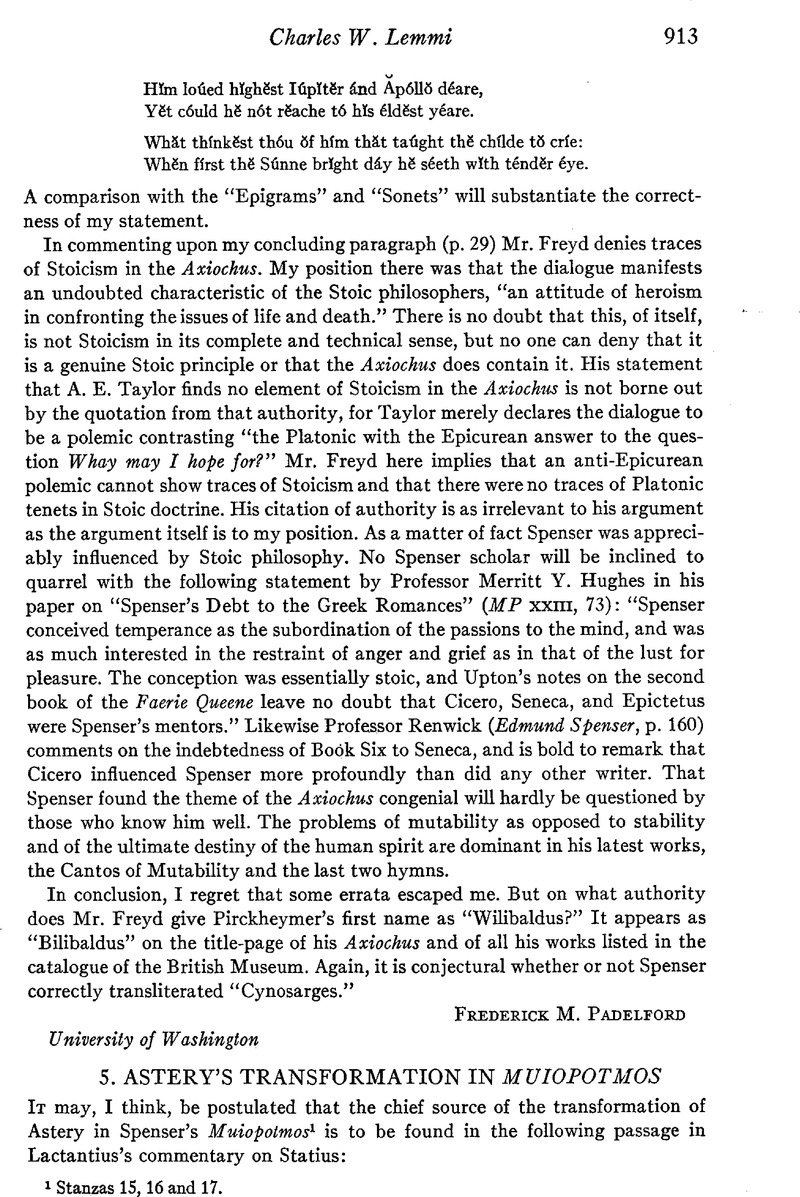No CrossRef data available.
Article contents
Astery's Transformation in Muiopotmos
Published online by Cambridge University Press: 02 December 2020
Abstract

Information
- Type
- Comment and Criticism
- Information
- Copyright
- Copyright © Modern Language Association of America, 1935
References
1 Stanzas 15, 16 and 17.
2 Lactantius Placidus, Commentarii in Statii Thebaida (Teubner: Leipzig, 1898), iv; 226: Venus et Cupido, cum quodam tempore voluptatis gratia in quosdam nitentes discendissent campos, lasciva contentione certare coeperunt, qui plus sibi gemmantes colligeret flores. Quorum Cupido, adiutus mobilitate pennarum, postquam naturam corporis volatu superavit, victus est numero. Peristera enim nympha subito accurrit et adiuvando Venerem superiorem efficit cum pœna sua. Cupido siquidem indignatus mutavit puellam in avem quæ a Gæcis appellata. Sed pcenam honor minuit. Venus, namque consolatura puellæ et innocentis transfigurationem, columbam in tutela sua esse mandavit.
3 Cf. I. E. Rathborne, “Another Interpretation of Muiopotmos,” PMLA, xlix, 1061.
4 Cf. Lemmi, “The Allegorical Meaning of Spenser's Muiopotmos,” in PMLA, xlv (1930), 732–748.

